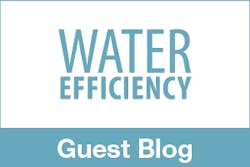Water is a classic carrier of disease. A variety of bacteria, parasites, and viruses known as pathogens can potentially cause health problems if ingested by humans.
In my experience, the healthfulness (hence legality) of water is based on certain presumptions and assumptions. When a sample of water measures up to a series of statutory limits as delimited by regulatory sanctioned laboratory tests, it is presumed safe. But it’s important to consider: can such tests actually measure the reality of risk from the growing number of contaminants and pathogens entering the water supply? Even if water is deemed legal, is it safe?
At the 2006 Environmental Law Conference, session #27 offered interesting insight into pharmaceuticals in groundwater. Of particular interest was the analysis of the Safe Drinking Water Act by one of the USEPA drinking water toxicologists. His paper concluded with the following: “Bottom line on almost all of the ‘emerging’ contaminants that have attracted attention: It will be a long time, if ever, before they are regulated under the SDWA.”
The Safe Drinking Water Act (SDWA) is a federal law enacted in 1974 that protects public drinking water supplies. The EPA sets standards for drinking water quality and implements various water testing programs to ensure drinking water safety.
However, a growing number of scientific papers raise serious questions about the validity of water quality tests. These papers encourage us to look closely at how we define “safe” water.
Although the standards-based US water quality assurance system is presumed to protect those who use the product, there are increasing examples of its failure to do so. In the case of Flint, MI, government officials repeatedly assured Flint residents that their water was safe. Recently, water-related lawsuits have been brought against officials in Chicago and New Jersey. Similar discussions relating to lead contaminated water are under review in Washington DC.
The 6th Circuit’s federal appeals panel in review of Flint noted that public health issues of water pollution could occur without violating the SDWA if drinking water was contaminated by a pollutant not regulated by the Safe Drinking Water Act. This raises questions on what may be covered. If a health-harming contaminant exists within the water, but is not covered by the SDWA, does the water provider have any liability? Can the standards be contested?
The microbiology of water is complicated. Some water engineers, including regulators, may not be well-versed in the latest science and management techniques. Thus they may attempt to lump control of biological contaminants into the same box as controlling chemical contaminants. However, the mantra of “the solution of pollution is dilution” works poorly for living organisms with rapid reproduction capacities. Thus, exceedances of pollutant limits need to be carefully noted and sources exigently monitored.
Additionally, some critical aspects of regulatory-driven water quality tests were established well before the scientific community really understood how false negative results could impact human health. This includes impacts from a wide variety of contaminants failing to be called out in lab tests that are now getting into our aquatic systems, both drinking water supplies and sources. False negative lab results can occur because the tests cannot accommodate the increasing variety of contaminants and pathogens now found in drinking water.
Thus, does merely passing the current water quality tests mean that it is “safe” water, even though it might be “legal”? If it is legal, does that mean the provider is free from liability?
What are your impressions?Editor’s note: Dr. Edo McGowan has forty years of experience in the development of local, regional, and international programs relating to health aspects of water quality, vector control, the analyses and disposal of hazardous materials.

